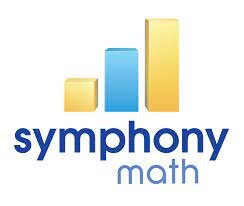According to EdWeek Research Center, one in four U.S. teachers often feel anxious doing math. More broadly, one in five Americans report having severe math anxiety. Math anxiety is not disliking math or having poor math skills; in fact, most who suffer from math anxiety are average to high math performers, but rather an acute negative response to situations that involve math. When one considers that those who experience math anxiety are a quarter of our teachers and possibly a fifth of parents, the consequences to students can be severe and long lasting.
Math anxiety is an emotional response to math that can develop early. It disrupts the brain’s function by interfering with working memory, necessary for holding conceptual understandings which allow us to manipulate numbers. Math anxiety is linked to higher areas of the brain related to other emotions, such as frustration, shame, and fear of failure. These emotions engage prior to beginning work on a math task and can trigger math avoidance and strengthen a belief that “math people” are born with a certain aptitude most lack. This fixed mindset of math and non-math people continue throughout K-12 classrooms and college-level math courses, causing many students to choose career paths that do not involve higher-level requirements for math.
Teachers who experience math anxiety may unconsciously communicate their fears to students. The perceptions of being born “good at math” and that boys are by gender stronger in math can lead struggling students to see themselves as lacking any math ability and giving up on the content early. However, there is evidence that these perceptions are changing as math instruction changes. Researchers Annette Chavez and Connie Carroll Widmer conducted a survey of two hundred thirty elementary teachers using a Math Attitude Inventory. While 17% of female teachers and 8% of male teachers experienced math anxiety, a majority of all teachers felt positive about teaching math. They felt secure in their content understanding and expressed determination to break the cycle of math anxiety by creating classroom cultures where struggling was normal, and mistakes were seen as learning experiences. These teachers saw manipulatives as necessary instructional tools and not as “crutches” to be dispensed with as early as possible.
A key component of teacher satisfaction in teaching math is an understanding of BIG IDEAS in math, the underlying concepts that build our mathematical foundation. Symphony Math is a program that excels in creating a deep understanding of these concepts by embedding them throughout its curriculum.
As teachers support students in Symphony, they discover how numbers work and are related to each other at much deeper levels than through typical algorithm-based teaching.
Symphony Math begins with conceptual understandings of quantity, encouraging students to experience amounts, sizes, counting, comparing, and sequencing numbers. Parts to whole follows, giving students experiences in partitioning wholes into parts and combining parts to create wholes. These understandings build the foundation for addition and subtraction. Hierarchical groupings introduce the concepts of grouping amounts into systems of sets and subsets, using place value to construct and deconstruct numbers. The recognition of value by place is key to understanding our Base 10 system. Combining hierarchical grouping with parts to whole allows students to physically manipulate larger number to see how regrouping within the Base 10 system works. Rather than rote “borrow and carry,” students can reason through the process of regrouping at a conceptual level which gives them greater understanding of what large numbers express. The final BIG IDEAS Symphony Math introduces are repeated equal groupings, which underlies multiplication and division by creating wholes of equal sized parts and combining repeated equal grouping with parts to whole understandings. This gives students experiences in applying their previously developed understandings to seeing equal fractional parts as relative to the whole. This deep conceptual experience demystifies fractions and allows students to reason fractional operations at a higher cognitive level.
Building strong conceptual understandings of numbers in the early years through programs like Symphony Math helps both teachers and students overcome math anxiety. Offering multi-faceted experiences working with and manipulating numbers gives learners of all ages confidence that overcomes the frustration and fear of failure that can lead to math avoidance.
Math anxiety does not have to mean math failure.










